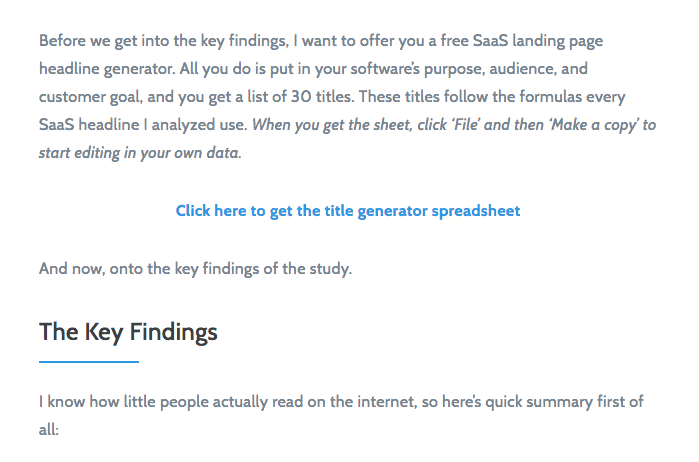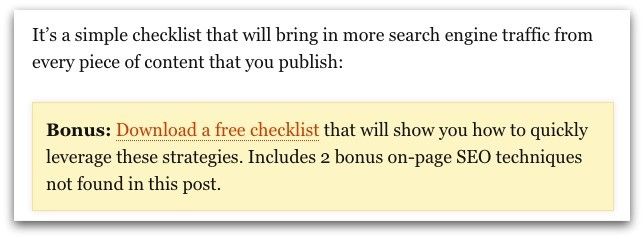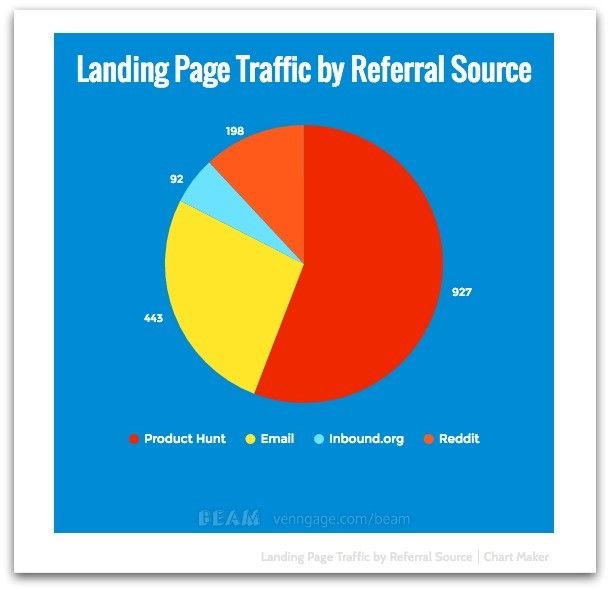 You’re writing, publishing, promoting and optimizing. You’re marketing content non-stop, but nothing seems to move the needle. Even when you have a big idea, it doesn’t work quite as you planned.
You’re writing, publishing, promoting and optimizing. You’re marketing content non-stop, but nothing seems to move the needle. Even when you have a big idea, it doesn’t work quite as you planned.
For a while, we had this problem at Process Street. We followed the best practices from the pros, like Neil Patel and Brian Dean, hoping but a big breakthrough. Looking back over the past year, there’s been a steady uptick thanks to 4 strategies we’ve been pushing hard.
I just checked our analytics, and traffic has increased almost 5x (474%) over the last 12 months. In this post, I want to unpack these 4 strategies we used to do it.
Content upgrades: turning organic search traffic into email subscribers
For better or for worse, we’ve all used and been on the receiving end of pop-ups. They interrupt our reading experience and usually get X’d as soon as they appear. In fact, the only convert at a rate of around 1%. Nonetheless we haven’t stopped using regular pop-ups (after all, they do ten times better than static boxes).
So, onto content upgrades.
If you’ve ever seen bonus content offered in exchange for an email address, you’ve seen a content upgrade in its natural environment. The reason they work so well is that the user asks for something extra — they don’t get it shoved in their face.
You can add a content upgrade to just about any post, but it’s best to go back to posts that are hauling in a ton of organic search traffic so you know that your content upgrades will be put to good use.
A good example of a content upgrade for a data-driven post might be a spreadsheet download of the full data set. For a ‘how to’ guide, you could give away a checklist, either in PDF or created with a tool like Process Street. A few tools for adding content upgrades to your posts include:
Another thing to consider is the layout. Where do you put the box or button? What does it look like? Brian Dean uses a yellow box:
We use a prominent CTA button:
What’s best for you? Why not A/B test it and find out!
Write, design, publish and promote and ebook
The quickest win out of this list of methods was, without a doubt, creating an ebook. It scored us 746 subscribers overnight.
We turned a series of blog posts into an ebook, hired a designer for around $100 through Upwork and promoted it to both a warm list of mentioned contacts and a cold list of influencers.
The part of the process that made the most impact for the least effort was submitting it to Product Hunt. See this graph (created by BEAM) for an exact breakdown:
You need to be approved to list on PH, so we reached out to an active member of the community who did it for us. As luck would have it, he had several hundred followers, and all of them were automatically emailed when the book came out.
We made it to the front page of the site and sat at #1 of the book section for the day.
As a bonus, the book was both interesting to a wide audience and highly relevant to our product. It grew our blog subscribers and scored us customers in one move.
Click here to get the step-by-step process we followed.
Syndication and guest posting
Syndication and guest posting is the most effective SEO strategy we’ve used to date. It works so well because it’s often the only reliable way to get backlinks to niche content.
Wildly popular content that simultaneously focuses on your business isn’t always possible. So by linking back to your high-value content in guest posts, you’re driving high-intent traffic back to your page by giving it a better chance to hit the elusive page 1 of Google.
The winning strategy for us has been to go after extremely high-value publications like TechCrunch and The Next Web so we have a solid portfolio first. Then, drawing from a collection of blogs you love to read (try saving the RSS feeds to feedly), we can pitch the editors of those blogs with targeted content ideas.
With around 10 pitches a week, I get a full schedule of guest posts to write, especially considering that I’m also a consistent guest contributor at several places and write in-house at Process Street. This tactic takes a lot of targeting, list making, reading and writing, but by using it we’ve managed — on several occasions — to outrank sites with huge domain authority for a keyword that is hyper-relevant to our product.
I’ve written a guide on how I find and pitch blogs for guest posts here. However…
Splitting your time between guest posts and writing in-house can be difficult.
Back at base, we have 3 full-time writers covering a mixture of content for our own blog, content for big sites like TechCrunch and content for other blogs. This way, we’re able to create and execute on large strategies to target specific keywords and, within a couple of months, rank for the keyword we choose.
Do you have any strategies that have made a powerful difference to your blog? Let me know in the comments, I’d be happy to have a chat!
Benjamin Brandall is the head of content marketing at Process Street. He writes on tech, marketing, design and startups. Find him on Twitter here.





 Follow
Follow
















